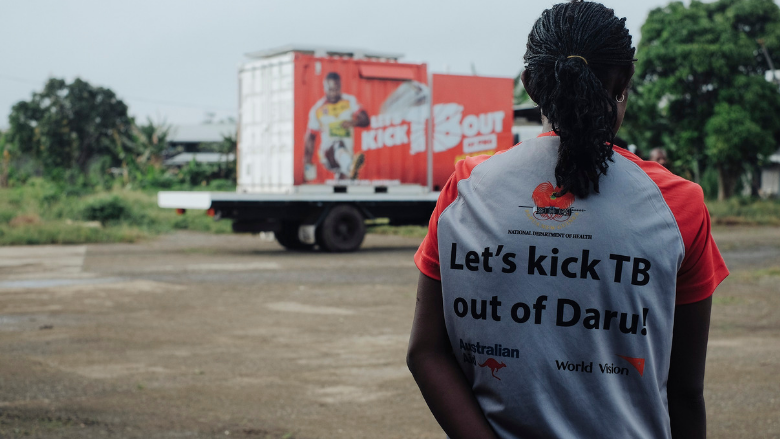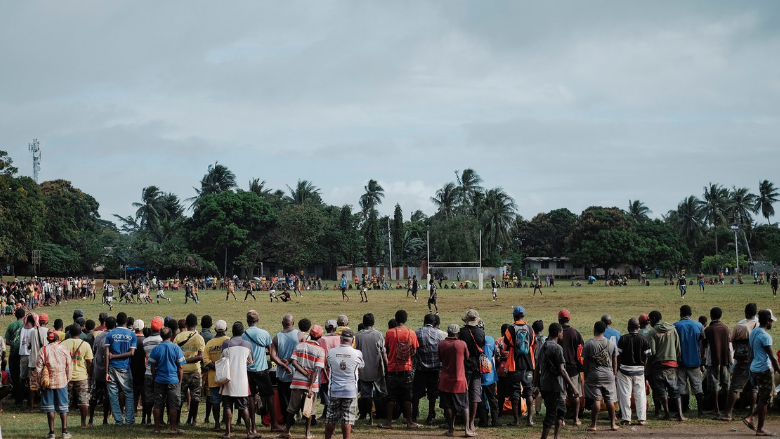Daru, Papua New Guinea, July 2018 – The sun sinks low, marking the end of the rugby match and the start of the evening market, set up along the main road. Women stack coconuts and fresh spinach in bunches. The streets are quickly crowded, with people jostling past each other to buy food or travel home.
This is Daru town, the urban hub of Daru Island, a 14.7-square kilometer (5.6 square miles) landmass located in the Torres Strait, the stretch of water between Australia and Papua New Guinea (PNG). Part of PNG’s Western Province, the people of this small island are facing a very large problem: extraordinarily high prevalence of tuberculosis (TB).
As the provincial capital and one of few towns with both a hospital and an ATM, Daru town attracts people from all over PNG’s massive Western Province, and it is significantly overcrowded. Authorities have reported an average 8-12 people living under the same roof and in some cases up to 20 people. Cramped, uncomfortable living conditions, combined with PNG’s oppressive tropical heat, contribute greatly to the tuberculosis epidemic on the island.
“Tuberculosis can infect anyone who is in the vicinity of someone who has the disease,” explains Dr Paison Dakulala, Deputy Secretary of Health for Papua New Guinea. “Any one person who has [untreated] tuberculosis will infect 10-15 people in a year if they live in that same setting.”



